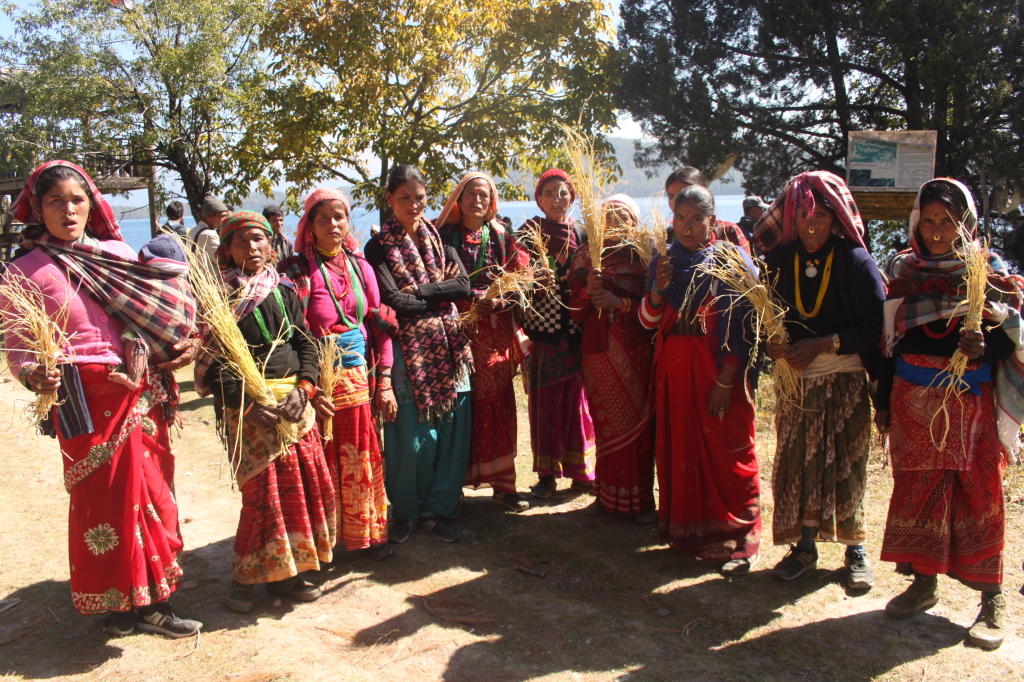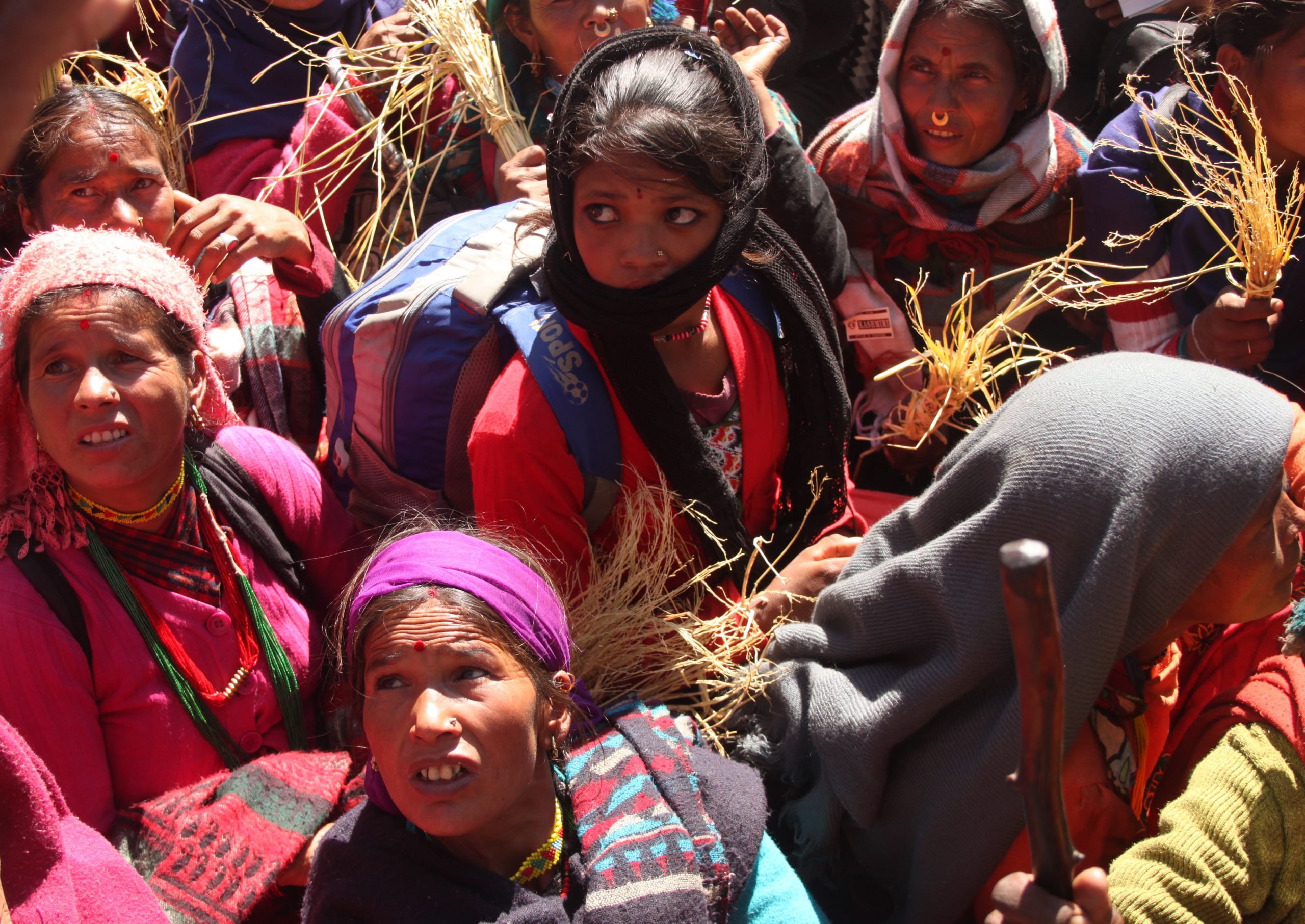In the last week of October, farmers in Nepal’s remote northwestern Mugu district were celebrating Tihar —the festival of light –one of the biggest Hindu festivals of the year. But the celebrations didn’t last long after a severe hailstorm pounded the area for over four hours, destroying rice and other crops that were ready to harvest. Many farmers have been left with no option but to migrate to India temporarily to find work as porters to feed their families.
The hailstorm destroyed Ratna Bahadur Malla’s paddy fields and left him struggling to feed his family of five. “There is no way to earn money here in the village and no food to eat so I have told my wife that I am leaving for India to earn some money,” said Malla. Mugu district has one of the lowest levels of human development in Nepal, according to the UNDP and faces severe food shortages every year.
Coincidently, the hailstorm came at the same time as a high-level conference on climate change was held in the remote district. Angry locals who wanted compensation for their losses organised a protest demanding justice outside the event, convened by Nepal’s Ministry of Science, Technology and Environment, and attended by planners, experts, local parliamentarians and advocacy groups . With tears in her eyes, Shantu Shahi from Sirikot village said, “The government should either kill us or compensate our loss; one year’s hard work has gone and we have no way to feed our children.” Shahi is one of thousands of villagers who have been left in a dire situation after the hailstones destroyed their crops.

Most of the villagers said they had never witnessed such an intense hailstorm (though a few people recalled a severe hailstorm in the 1970s) and are worried about possible food shortages in the future. The local authorities said they were aware of these concerns: “Our agriculture officers are in the field assessing the damage. Once we get exact figures, we will report to the central authorities and make the necessary arrangements for food and compensation,” said Shambhu Prasad Regmi, Mugu’s chief district officer.
In its fifth assessment report, the Inter-governmental Panel on Climate Change (IPCC) – the UN scientific body monitoring global warming – stated extreme weather events may increase due to climate change. But experts say it is still difficult to directly attribute one event to climate change. “We know extreme weather events will increase due to climate change and this event shows how much panic there would be if such incidents occur frequently, so we need effective ways of adapting and implementing these programmes accordingly,” said Madan Koirala, professor of Environmental Science at the Tribhuvan University.
The Nepal government has already prepared its national and local adaptation plans of action (LAPAs), in which it identified Mugu as one of the most vulnerable districts. However, some people are frustrated by the lack of action on the ground. “Documents are prepared and dumped, discussions and debates are held in the capital but little resources reach the locals,” said Suman Malla, a journalist based in Mugu.
The government claims adaptation programmes are being implemented in the district. “A government climate change adaptation project has been helping locals in Mugu but we don’t deny that resources are limited and it can’t cover all those affected,” said Naresh Sharma, a senior agriculture economist at the Ministry of Science, Technology and Environment. But these projects focus on preparing models to decide what appropriate adaption actions to take. Many victims said they were unaware of any such programmes or plans.
The district headquarters of Gamgadhi was only connected by road last year, but the road is not open all year round because it’s not been gravelled or black topped. It is the only way to connect the district to the nearest airport. “It took about 30 years to gravel this airport, you can imagine how marginalised this district is. People haven’t received basic things for survival, let alone climate change adaptation,” added journalist Malla.
Planners believe that adaptation to climate change is only possible if the government encourages more investment in natural resources like water to lift locals out of poverty. “We can’t adapt without money and donors’ money won’t be enough. We have to attract investors to develop hydro projects, agriculture and tourism so people have jobs,” said professor Govinda Raj Pokharel, vice-chair of the National Planning Commission.

